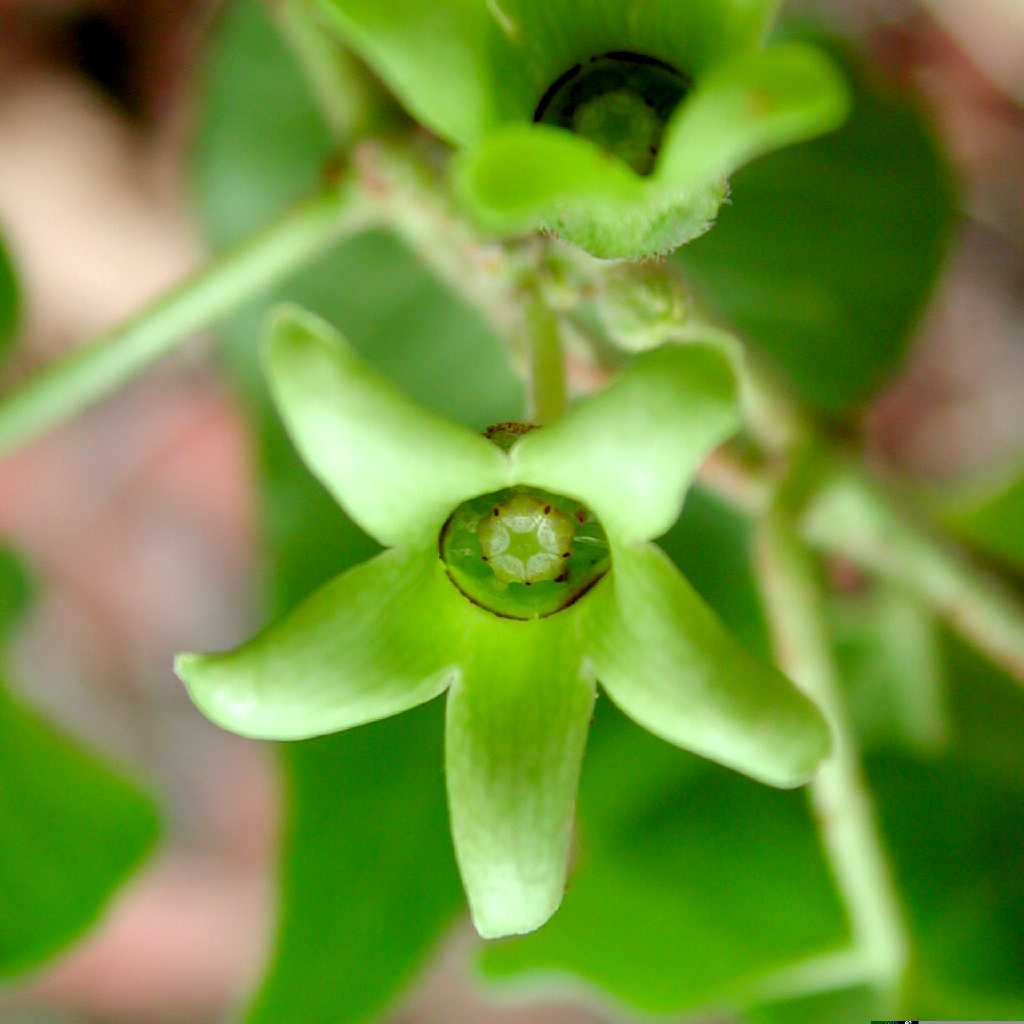Matelea
|
Family: Apocynaceae |
PLANT: Perennial herbs or subshrubs, with vegetative parts more or less conspicuously hairy and frequently glandular. STEMS: twining or prostrate to strictly erect. LEAVES: opposite, in ours petiolate, ovate to lanceolate and mostly cordate at the base. INFLORESCENCE: 1- to several-flowered racemose, umbelliform, or irregular cymes, mostly sequentially blooming. FLOWERS: showy to rather small; corolla rotate to campanulate, mostly dull colored in shades of white, green, yellow or purple; crown extremely variable, in ours arising near the region of union of the corolla and filaments and more or less concealed by the corolla, ring- or cup-shaped and variously undulate to lobed or of 5 distinct, dorsiventrally flat to somewhat infolded segments opposite the anthers; anther head in ours subsessile or the column to 2 mm high, mostly disk- to funnel-shaped, the anther wings more or less curving down beneath the anther head; pollinia horizontal or less typically pendulous from the translator arms, with a sterile, hyaline area at the junction with the arm; stigma head flat to variously beaked. FOLLICLES: smooth, winged, or warty. NOTES: Ca 250 spp.; in warm temperate and tropical regions of N. and S. Amer. A taxonomically little-studied group exhibiting varied and perplexing elaborations of the crown, corolla, and stigma head, and often divided into several dozen segregate genera. REFERENCES: Sundell, Eric. 1994. Asclepiadaceae. J. Ariz. - Nev. Acad. Sci. Volume 27, 169-187. Cor deeply divided, its lobes strongly ascending to widely spreading, linear to elliptic, always much longer than wide; corona a flat disk or shallow cup, the latter shorter than to slightly surpassing the gynostegium; margin of the corona distinctly or obscurely 10-lobed; anthers with a short, broad, membranous terminal appendage, or the appendage virtually obsolete; pollinia solitary in each pollen-sac, pendulous or ±horizontally placed, with a slender attachment to the translator; perennial twining herbs with broad lvs deeply cordate at base, the fls medium-sized, in pedunculate extra-axillary cymes solitary at the nodes; our spp. all with short-hairy herbage. 125, New World, mainly tropical. (Gonolobus; Odontostephana; Vincetoxicum Walter, not Wolf) Gleason, Henry A. & Cronquist, Arthur J. 1991. Manual of vascular plants of northeastern United States and adjacent Canada. lxxv + 910 pp. ©The New York Botanical Garden. All rights reserved. Used by permission. |

